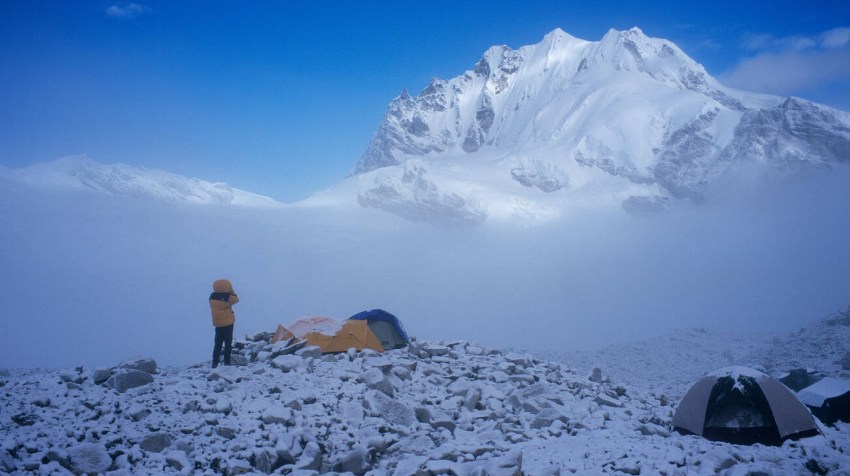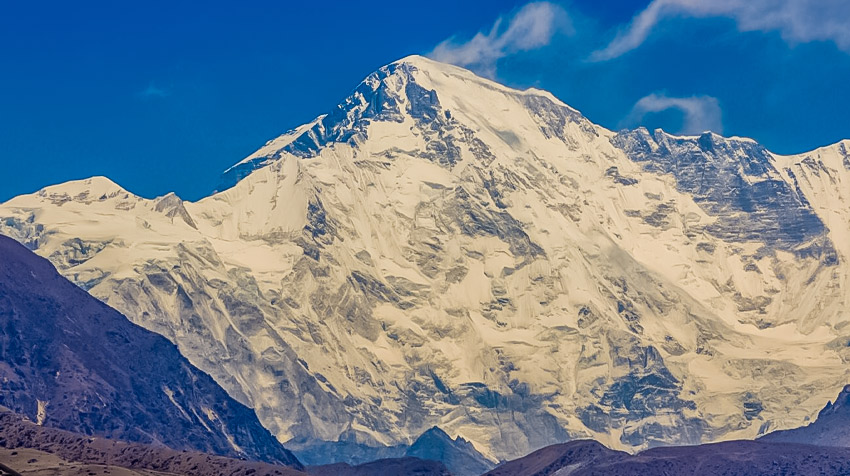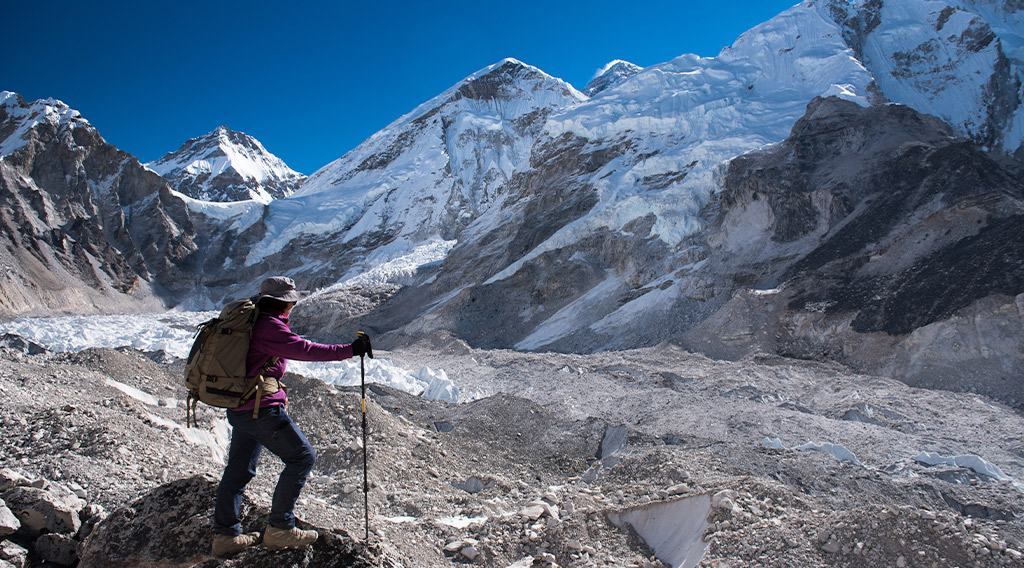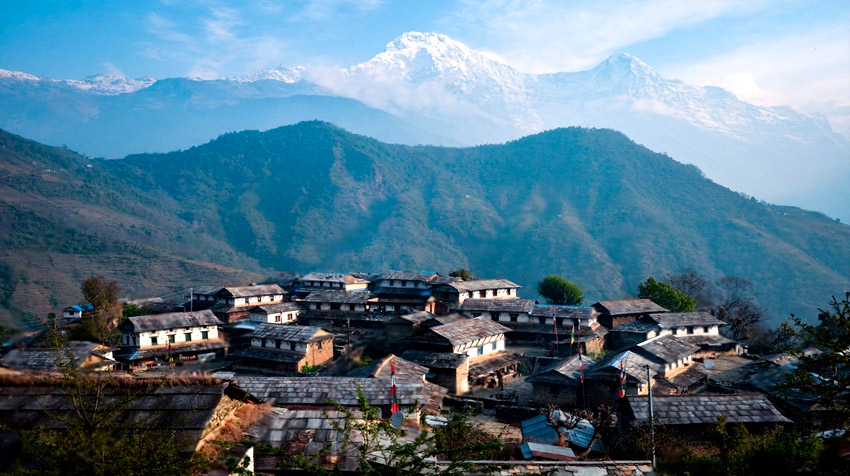10 Essential Tips for Successful Advanced Base Camp Trek

Are you dreaming of conquering the Advanced Base Camp and achieving summit success? If you're ready to take on the ultimate mountaineering challenge, we've covered you with these ten essential tips. From physical training and mental preparation to gear selection and team dynamics, we'll help you navigate the treacherous terrain and reach new heights.
In this guide, we'll share expert advice from seasoned mountaineers who have successfully conquered the Advanced Base Camp and stood on the summit. Whether you're a seasoned climber looking to tackle a new peak or a beginner with lofty ambitions, these tips will give you the knowledge and confidence to overcome the challenges.
Overview of the Advanced Base Camp
The advanced base camp is the final staging point before the ultimate push for the summit. Situated at an average elevation of 5,400 meters (17,700 feet), this remote and inhospitable environment presents many challenges that must be overcome to succeed. From the biting cold and thin air to the treacherous terrain and unpredictable weather, the advanced base camp is the ultimate test of a mountaineer's skill, endurance, and determination.
The landscape becomes increasingly stark and foreboding as you approach the advanced base camp. The air is thin and dry, making even the simplest tasks like walking or pitching a tent laborious. The temperature can plummet well below freezing, and the risk of frostbite and hypothermia is ever-present. Snow and ice often cover the ground, requiring specialized equipment and techniques to navigate safely.
Despite the daunting challenges, the advanced base camp is also a place of profound beauty and awe-inspiring grandeur. The towering peaks surrounding the camp seem to pierce the sky, their jagged summits glittering in the sunlight. The vast, silent expanse of the glaciers and snowfields stretches out before you, a testament to the power and majesty of the natural world. It is a place that demands respect and humility, and the experience forever changes those who conquer it.
Importance of Physical Fitness and Training
Reaching the advanced base camp and achieving summit success requires a level of physical fitness that only some can attain. The high altitude, extreme cold, and grueling terrain place immense demands on the body, and only those who have prepared thoroughly can withstand the rigors of the climb.
Cardiovascular endurance is paramount, as you must move for long periods at a slow, steady pace while carrying a heavy pack. Strength training, particularly in the legs and core, is also crucial, as you will need to navigate steep, uneven terrain and support your body weight on the ascent and descent.
In addition to building physical strength and endurance, training for the specific demands of high-altitude climbing is essential. This may include simulating the effects of altitude through training at high elevations or using altitude training masks, as well as practicing with the specialized gear and equipment you will be using on the mountain.
Proper nutrition and hydration are also critical components of your training regimen. Ensuring your body is fueled and replenished with the correct nutrients and fluids will help you maintain your energy levels and relieve the effects of altitude sickness and fatigue.
Equipment and Gear Essentials for the Advanced Base Camp
Conquering the advanced base camp requires a carefully curated selection of specialized gear and equipment. Every item in your pack, from base layers to climbing harnesses, must be chosen with the environment's unique challenges in mind.
At the core of your kit should be a durable, weatherproof outer shell that can protect you from the biting wind, driving snow, and intense cold. Look for jackets and pants made from high-performance fabrics like Gore-Tex or Polartec, which offer superior insulation and breathability.
Proper footwear is also essential, as you will spend long hours navigating treacherous terrain. Invest in sturdy, well-insulated mountaineering boots with rigid soles and aggressive traction. Pair them with high-quality socks that wick moisture away from your feet and provide additional cushioning.
Other essential items include a reliable headlamp, a sturdy climbing harness, carabiners, ropes, and ice axes. Depending on the specific route and conditions, you may also need specialized equipment like crampons, snowshoes, or skis. It's crucial to thoroughly research and test your gear before setting out, as a single equipment failure could have disastrous consequences.
Acclimatization and Altitude Sickness Prevention
One of the most significant challenges facing mountaineers at the advanced base camp is the risk of altitude sickness. As you ascend to these lofty elevations, the air becomes increasingly thin, making it more difficult for your body to absorb the oxygen it needs to function correctly.
Proper acclimatization is the key to mitigating the effects of altitude sickness and ensuring your body can adapt to the new environment. This process involves gradually increasing your elevation over time, allowing your body to adjust to the lower oxygen levels gradually. Altitude sickness can lead to severe health issues, including pulmonary edema and cerebral edema, which can be life-threatening if not treated promptly.
During the acclimatization process, it's essential to listen to your body and be vigilant for the early signs of altitude sickness, such as headaches, nausea, fatigue, and difficulty sleeping. If you experience these symptoms, it's crucial to descend to a lower elevation and seek medical attention immediately.
In addition to acclimatization, several other strategies can be employed to prevent altitude sickness. These include staying hydrated, avoiding alcohol and tobacco, and taking supplements like Diamox, which can help your body adapt to the lower oxygen levels.
Navigation and Route Planning for Summit Success
Reaching the summit from the advanced base camp requires meticulous navigation and route planning. The terrain is often treacherous, with steep, icy slopes, hidden crevasses, and unpredictable weather conditions that can quickly turn a straightforward route into a deadly trap.
Experienced mountaineers rely on a range of tools and techniques to navigate the challenges of the advanced base camp. This may include GPS devices, topographic maps, and altimeters to track their progress and identify potential hazards. They also use specialized mountaineering skills, such as reading snow and ice conditions, identifying safe passage routes, and setting up fixed ropes and anchors to ensure safety.
Route planning is a critical component of summit success, and it's essential to carefully study the terrain, weather patterns, and any known hazards before setting out. This may involve consulting with local guides, who have invaluable knowledge of the area's unique challenges and can provide crucial advice on route planning. Reviewing previous expedition reports and conducting a thorough area survey are essential steps in route planning.
Once you've established a route, you must remain flexible and adaptable, as conditions can change rapidly on the mountain. For example, you might need to change your summit day or entire route if a storm is approaching. Be prepared to adjust your plan as needed, and always prioritize safety over speed or summit ambitions.
Teamwork and Communication in the Advanced Base Camp
Conquering the advanced base camp is a genuine team effort, and the ability to work effectively with your climbing partners is essential for success. From coordinating logistics and decision-making to providing emotional support and physical assistance, strong teamwork and communication are the foundation of any successful expedition.
Clear and open communication is crucial in the advanced base camp's challenging and often isolating environment. Team members must be able to share information, express concerns, and make decisions quickly and efficiently, as the consequences of miscommunication or misunderstandings can be severe.
Effective teamwork also requires a deep level of trust and mutual respect. Climbers must be willing to rely on one another physically and emotionally and put the team's needs above their own goals. This may involve making difficult sacrifices, such as deferring to a more experienced team member or turning back from the summit to ensure the group's safety.
To foster this level of teamwork and communication, it's essential to establish clear roles and responsibilities within the group and a shared understanding of the team's objectives and the challenges they may face. Regular check-ins, debriefings, and team-building exercises strengthen team members' bonds and ensure everyone is on the same page.
Weather Conditions and Forecasting
The weather at the advanced base camp is notoriously unpredictable and can change rapidly, posing a significant threat to the safety and success of any mountaineering expedition. Sudden storms, high winds, and extreme temperature fluctuations can quickly turn a promising summit attempt into a life-threatening ordeal.
Therefore, careful monitoring and forecasting of weather conditions is critical to any advanced base camp strategy. Mountaineers rely on various tools and resources to track weather patterns, including satellite imagery, weather models, and real-time reports from other climbers and local guides.
By closely monitoring weather conditions and forecasts, climbers can make informed decisions about when to attempt the summit, when to retreat, and how to best prepare for the challenges they may face. This may involve adjusting their schedule, modifying their gear and equipment, or even postponing the expedition if the weather conditions are too dangerous.
In addition to monitoring the weather, climbers must also be skilled at reading and interpreting the signs of changing conditions on the mountain. This includes observing cloud patterns, wind direction and speed, and the behavior of the snow and ice, all of which can provide valuable clues about the current and future state of the weather.
Safety Precautions and Emergency Preparedness
Climbing at the advanced base camp is an inherently dangerous endeavor, and the consequences of a single misstep or equipment failure can be catastrophic. As such, mountaineers need to take every possible precaution to ensure their safety and the safety of their team.
This begins with thorough training and preparation, including mastering essential mountaineering skills, practicing with specialized equipment, and undergoing rigorous physical and mental conditioning. Climbers must also be well-versed in emergency response protocols, first aid, and rescue techniques, as they may be called upon to provide immediate assistance in an accident or medical emergency.
Safety precautions must be continuously maintained and reinforced at the advanced base camp. This includes establishing clear communication protocols, ensuring all team members are accounted for, and maintaining a well-stocked first aid kit and emergency supplies.
In an emergency, climbers must respond quickly and effectively. This may involve initiating a rescue operation, providing immediate medical care, or evacuating the injured party to a lower elevation. By having a comprehensive emergency plan and regularly practicing emergency drills, climbers can increase their chances of survival and minimize the impact of unforeseen incidents.
Celebrating Summit Success and Concluding Thoughts
Reaching the summit of a towering peak from the advanced base camp is a monumental achievement, a testament to the climbers' physical, mental, and emotional fortitude who have conquered this ultimate challenge. The sense of accomplishment and pride that comes with standing atop the world, surrounded by the vast, untamed beauty of the mountains, is a feeling that cannot be easily described or replicated.
For those who have successfully navigated the treacherous terrain, braved the extreme conditions, and overcome the countless obstacles that stood in their way, the summit represents the culmination of months, or even years, of dedicated preparation and unwavering determination. It is a moment of triumph and self-discovery, a profound realization of one's capabilities and the power of the human spirit.
But the journey does not end at the summit. The descent from the advanced base camp can be just as dangerous as the ascent, and climbers must remain vigilant and focused to ensure a safe return. It is a time for reflection, gratitude, and the celebration of their hard-won achievement, as well as a chance to share their experiences and inspire others to pursue their lofty ambitions.
Ultimately, conquering the advanced base camp and achieving summit success is more than just reaching the highest point on the mountain. It is about the transformative power of challenge, the strength of the human will, and the profound connection we can forge with the natural world. It is a journey that tests the limits of our physical and mental capabilities and, in doing so, reveals the true depths of our inner strength and resilience.











